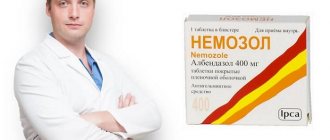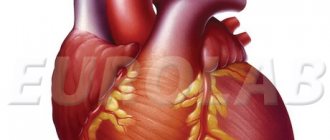“Beauty requires sacrifice” - this is how almost every headline in popular publications begins, or sounds from the lips of familiar beauties who have already seen this from their own experience.
Sacrifice concerns a low pain threshold in females. After all, most beauty procedures involve mainly injections.
But, fortunately, a separate group of drugs has already been developed, which is designed to reduce or relieve the patient of pain during the procedure, and these are anesthetics. Some of the oldest drugs that are in demand among most people, and without which it is impossible to imagine surgical interventions.
Today our article will be devoted to situations that, unfortunately, can happen in the office of every cosmetologist - allergic reactions to anesthetics, namely lidocaine.
If a critical situation arises related to an allergic reaction to anesthetics, we recommend that you immediately proceed to action.
Anesthetics in cosmetology and “pain management” by cosmetologists
In most cases, any ordinary and potential client of a cosmetology salon has three basic wishes and expectations from a future doctor’s visit:
- safety;
- efficiency;
- painlessness.
All qualified specialists know that pain can cause fainting, hypertensive crisis and even myocardial infarction.
In addition, it is worth noting that when we feel pain, our body releases a certain amount of inflammatory mediators, which directly affect the rate of restoration of the skin and damaged tissues. Therefore, it is not surprising that anesthesia has become a legal and important part of cosmetology.
But not everything is so smooth, even with the help of anesthetics. Because there is always a risk of having an allergy to painkillers.
Types of anesthesia that can be used in cosmetology:
- Local application anesthesia.
- Infiltration anesthesia.
- Conduction anesthesia (perineural and endoneural).
We will also consider the main types of anesthetics that are widely used in cosmetology:
- Esters (procaine, dicaine, butamben)
- Amides (lidocaine, articaine, prilocaine)
Amide MAs, unlike ether MAs, are stable in solutions and are slowly hydrolyzed by liver microsomal enzymes. Therefore, amides may have a toxic effect on the body of those patients who have certain liver disorders due to the extended half-life of the drug.
Allergic reactions to anesthetics are an unpleasant side of pain management procedures, but they are present in cosmetology practice. Every specialist should know the correct procedure in the event of critical situations such as anaphylactic shock.
Causes of anaphylactic shock
Typically, anaphylactic shock develops when the irritant enters the body again. Therefore, in principle, based on the body’s first reaction to a certain substance, we can talk about the existing danger. But such a situation cannot always be predicted; sometimes anaphylactic shock develops upon first contact with an allergen, mistaking it for a substance similar in antigenic structure. This reaction is called cross-allergy.
Content:
- Causes of anaphylactic shock
- Rate of development of anaphylactic shock
- Signs
- First aid for anaphylactic shock
A common cause of anaphylactic shock is medications based on protein molecules. These could be vaccines, hormonal drugs, antidotes.
If we look at the statistics, then antibiotics are in second place among the factors that provoke such a reaction in the body. The advantage is the penicillin group and substances similar in structure. It is against the background of the use of antibiotics that a cross-reaction can develop. Novocaine and other local anesthetics are also often allergens.
A common cause of anaphylactic shock is the bites of hymenoptera insects, in particular wasps and bees, whose venom is a strong allergen. Reactions to food irritants are very rarely this severe.
Anaphylactic shock - emergency care
One of the most dangerous types of complications is anaphylactic shock - an acute and immediate allergic reaction to antigens, which in 10-20% of cases has fatal consequences (without timely administration of adrenaline). Therefore, the reaction and actions of a cosmetologist must be instant and accurate.
First aid for anaphylactic shock
- 0.1% adrenaline solution 0.2-0.5 ml intravenous / sublingual injection every 15-20 minutes. (until the patient's condition stabilizes).
- If anaphylactic shock develops after injection of the drug - 0.15 - 0.3 ml of adrenaline hydrochloride 0.1% in the place where the allergen was injected.
- Dexamethasone – 8 mg (intravenously).
- Antihistamine drugs of the 2nd and 3rd generation - Tavegil, Loratadine, Cetrin, Telfast, Erius.
- Further treatment should be aimed at maintaining a normal level of blood pressure (if necessary, use vasoconstrictors, restore bcc), eliminating bronchospasm - administering Euphyllin 2.4% intravenously and slowly (10 ml), Drotaverine hydrochloride (NO-SPA) 40 mg intravenously.
- Hospitalization in a specialized department of a medical hospital.
True allergic reactions to drugs, with the participation of immunological mechanisms, develop quite rarely, and account for 1% of all drugs included in this group.
Allergic reactions of the immediate type (with the participation of IgE) can manifest themselves in the form of urticaria, angioedema, symptoms of allergic rhinitis, conjunctivitis and anaphylaxis reactions, the most dangerous of which is anaphylactic shock.
As for lidocaine, it is used as a local anesthetic for various cosmetic procedures, such as: peeling sensitive and hypersensitive skin; removal of papillomas; when introducing fillers; applying/removing cosmetic stitches or thread lifting procedures (mesothreads).
First aid for anaphylaxis
In such a difficult situation, only immediate qualified medical assistance can help. This can save a person's life.
Algorithm of actions
- Stop the intake of the substance that caused anaphylactic shock (contact, injection of the substance, food, inhalation of vapors, and other options). In case of an insect bite, you must immediately remove the sting and apply ice to the affected area. If anaphylaxis is caused by food, then you need to remove its remains from the oral cavity.
- Call an ambulance. In such a difficult situation, a call to an ambulance is mandatory, regardless of the symptoms of anaphylactic shock. The shock may be biphasic and may recur after 1-3 days.
- To alleviate the condition, the patient should lie on his back with his legs raised above his head.
- In case of nausea, you need to turn the patient's head to the side in order to prevent vomit from entering the respiratory organs.
- Open the windows to allow fresh air to flow, unbutton the patient’s clothes to make breathing easier.
- Cleanses the mouth to make breathing easier.
- If you have dentures, you need to remove them. If there is mucus in your mouth after vomiting, you need to clean your mouth with water.
- Check breathing and pulse. If there is no pulse, artificial heart massage is necessary. If the patient stops breathing, the process of artificial respiration will be ineffective due to swelling of the larynx. An intramuscular injection of a 0.1% adrenaline solution can help a patient and save his life.
If a person has had cases of anaphylactic shock before, he should always have with him a syringe pen containing a single dose of adrenaline.
In medical, there is an allergist-immunologist who will help you find out the causes of your allergic reactions and help prevent anaphylactic shock. He will give all the necessary recommendations and treatment plan. We can provide all allergen tests. The doctor conducts consultations at home and in the clinic (in Zapadny and in Alexandrovka). The cost of the medical center’s services can be found in the “Price” section or by calling the 24-hour hotline.
Watch a useful video
The mechanism of action of lidocaine and its scope of application
After injection into soft tissues, lidocaine reduces the permeability of cell membranes to sodium ions. Already after 45-90 seconds after the administration of lidocaine, the speed of nerve impulses decreases and the pain syndrome decreases. The duration of action of lidocaine ranges from 1 to 1.5 hours, depending on the chosen dose of the drug.
There are different forms of lidocaine that are used for local anesthesia: sprays, gels, creams, ointments and injections.
The most popular cosmetic procedures - bioreparation, biorevitalization, contour plastic surgery, mesotherapy, thread lifting - are associated with pain.
Allergic reactions to lidocaine
There are three degrees of development of allergic reactions of the human body to the action of an allergen:
I – mild degree of reaction
Dermatological symptoms (itching, redness, peeling of the skin, urticaria, allergic rhinoconjunctivitis).
The doctor must have in the medicine cabinet non-fluorinated GCS creams and antihistamines of the second and third generation + potassium-sparing diuretics.
II – average degree of reaction
• Hives, itching
• Angioedema (Quincke's edema)
What to do if these symptoms occur:
- Call an emergency medical team.
- A 0.1% solution of adrenaline 0.2 - 0.5 ml must be administered subcutaneously every 15 - 20 minutes until the client’s condition stabilizes, or 60 mg Prednisolone / Dexamethasone - 8 mg intravenously.
- Taking second and third generation antihistamines: Loratadine, Cetrin, Telfast, Erius. Protease inhibitors and kallikrein Kontrikal (30 - 40 units intravenously in 300 ml of 0.9% NaCl solution)
- Eczematous dermatitis, erythema multiforme, fever (up to 39 ℃), poly- and monoarthritis, toxic-allergic myocarditis.
III - severe degree
- Hematological reactions, nephrotic syndrome, hepatitis, myocarditis with rhythm disturbances.
- Lyell's syndrome (toxic epidermal necrolysis).
- Reflex bronchospasm, attack of bronchial asthma.
- Anaphylactic shock.
Signs
It is important for everyone to know the signs of anaphylactic shock! This will help save your own life and the lives of loved ones.
The main symptoms of anaphylaxis are:
- rapid development of allergic skin reactions - rash, itching, swelling, redness;
- fever, shortness of breath;
- Quincke's edema - in this case, not only the tongue and lips swell, but also the nose, ears, upper and lower extremities;
- sudden changes in mood, possible panic attacks;
- pain – in the heart, in the abdominal area, severe headache;
- hoarseness, barking cough, redness of the eyes, rapid discharge of secretions from the nose.
These are the primary signs that make it easy to recognize a life-threatening condition.
Then there is a sharp drop in blood pressure, pale skin, rapid but weak pulse and loss of consciousness. At this stage, only qualified specialists can help a person.
Anaphylactic shock as one of the most dangerous types of complications
In everyday life, systemic allergic reactions can occur after contact with many substances. An international study (ISAAC) showed that 20-25% of the world's population has one or another type of allergic disease. Moreover, this figure has tripled over the past 25 years.
Unfortunately, in Ukraine, we do not have reliable data on the incidence of this complex pathological condition among adults and children. However, the incidence of anaphylaxis deaths in the US and UK, which is 0.4 per million people (1-3 people annually), highlights the importance of training and awareness.
The most threatening type of allergic reaction in the human body is anaphylactic shock (AS). This reaction can develop due to the interaction of the antigen with immunoglobulin (IgE), which leads to the release of mediators and various systemic manifestations (skin, respiratory, cardiovascular failure, gastrointestinal).
Anaphylactic shock is an acute systemic reaction of the body's hypersensitivity to an allergen, which threatens human life and is accompanied by severe hemodynamic disturbances (failure of the circulatory system and hypoxia in all vital organs). Typically, the speed of reaction to an antigen can vary from a few seconds (minutes) to 5 hours from the moment of contact.
Preparing for the doctor's arrival
It is necessary to alleviate the condition of the victim, namely, the following algorithm is carried out for anaphylactic shock:
- lay the patient on his back, legs should be raised;
- You must immediately eliminate the allergen that caused the shock reaction. When a reaction occurs as a result of an insect bite or injection of the drug, you need to apply a bandage above the affected area in order to slow down the spread of the allergen throughout the body.
Make sure that the person does not take liquids. When vomiting, you need to turn your head to the side so that the patient does not choke. If you lose consciousness and stop breathing, provide resuscitation care for anaphylactic shock until the ambulance arrives.
Anaphylactic shock: pathogenesis and etiology
This term was first coined in 1902 to refer to severe conditions and fatal reactions in dogs after repeated administration of sea anemone tentacle extract.
The development of anaphylactic shock (or anaphylaxis) is associated with a number of etiological factors caused by IgE mechanisms:
- medications (taking local anesthetics, sleeping pills, colloid solutions, metronidazole, cytostatics, nitrofurans, β-lactam antibiotics, B vitamins, folic acid, tetracycline, muscle relaxants, monoclonal antibodies, β-blockers, sulfonamides)
- vaccines (measles, whooping cough, tetanus, rubella, typhoid, diphtheria toxoid)
- enzymes (chymotrypsin, trypsin, streptokinase, aprotinin, penicillinase)
- antisera (tetanus, diphtheria, antilymphocyte globulin)
- taking hormones (parathyroid hormone, insulin, ACTH, progesterone, vasopressin, calcitonin)
- diagnostic agents (radiocontrast agents, decholin, fluorescein)
- animal saliva and venom (insect and snake bites)
- food products (shellfish, fish, peanuts, soybeans, nuts, spices, dairy products)
- inhalation allergens (household, epidermal, insect, pollen)
This list can be continued, but it is drugs, food products and insect venom that are in the TOP among the common factors causing anaphylaxis.
Nutritional supplements (sulfites, monosodium glutamate), physical activity, hormonal changes, blood transfusions, and topical medications are among the least common etiological factors for the occurrence of AS.
You can also mention the causes of anaphylaxis and AS caused by IgE-independent mechanisms:
- Transfusion of blood or its individual formed elements.
- Hypothermia and physical activity.
- Systemic mastocytosis.
- Idiopathic anaphylaxis.
- The body's reactions to radiocontrast agents, opioid analgesics, aspirin and non-steroidal anti-inflammatory drugs.
This also includes factors (including individual ones) that are related to the client and external circumstances:
- Lifestyle – bad habits (smoking, alcohol, drugs), physical activity, taking non-steroidal anti-inflammatory drugs.
- Individual factors of a person - age (especially the elderly), gender, infections, menstrual cycle, diet and nature of nutrition, psychogenic stress.
- Past / concomitant diseases - bronchial asthma, cardiovascular diseases, blood pressure, increase in the basic concentration of serum tryptase.
Treatment of anaphylactic shock
Anaphylactic shock is the most dangerous allergic reaction, with a high mortality rate. All this imposes certain requirements. First of all, to medical institutions, which all, without exception, have a set of medications and equipment to assist with anaphylactic shock. The fact is that its mortality is greatly influenced by the time at which medical care begins.
First of all, it is necessary to provide access to the vein. If shock develops from drugs administered intravenously, stop their infusion and remove the syringe and leave the needle.
The drug of choice when shock develops is adrenaline - it is with its intravenous administration that first aid measures begin in the first two options. In the case of an anaphylactoid reaction, glucocorticoids (usually prednisolone) are administered intravenously, and epinephrine is added to a crystalloid drip solution, which is immediately given to the patient and continues to be done until the body is able to independently maintain blood pressure at a normal level.
Colloids are administered as additional drugs. They can significantly speed up the process of restoring normal hemodynamics: blood pressure and heart rate (heart rate).
All this time the patient must remain in an intensive care or intensive care unit. Only after his blood pressure remains at normal levels without inotropic support (intravenous drip of adrenaline and dopamine), the patient is transferred to the general ward. Here, general treatment of allergies continues for 1-3 days: hormones and histamine blockers.
Pathogenesis of anaphylactic shock
The pathogenesis of anaphylactic shock is caused by a type I allergic reaction, which develops in a highly sensitized organism.
The mechanism of development of the immune response occurs as follows: recognition of the allergen, its processing and presentation, the union of T and B lymphocytes, the formation of duplicate plasma cells that form antibodies and immune memory cells.
A very large amount of IgE during anaphylactic shock leads to an immediate hyperergic reaction.
Phases that form an immediate allergic reaction:
Immunological phase
- The antigen comes into contact with the nasal mucosa, with the surface of the skin, bronchi, gastrointestinal tract, or with the macrophages themselves.
- The latter absorb the allergen and transmit it to type 2 T helper cells, which begin to produce cytokines that stimulate the proliferation of B lymphocytes, their transformation into plasma cells with the subsequent production of IgE antibodies.
- Combination of antibodies (lgE).
- IgE antibodies are fixed on the surface of mast cells and basophils in the blood.
- Repeated contact with a familiar allergen.
- Communication of the allergen with antibodies on the surface of basophils and mast cells.
The pathochemical phase is characterized by the release of mastocytes + basophils, after the formation of immune complexes on the cell surface. Mediators C3, C5a-anaphylotoxins become part of the basophils and mast cells formed during degranulation.
The pathophysiological phase is the direct activity of these mediators on specific receptors of tissues and organs. This hypersensitive reaction is characterized by dilation of peripheral blood vessels, spasm of smooth muscles of organs, release of fluid from blood vessels (cardiovascular dysfunction), formation of edema of the respiratory tract and excessive secretion of mucus.
The clinical phase is final. It manifests itself in the form of anaphylactic shock and similar allergic reactions of the IgE-dependent type.
Anaphylaxis and anaphylactic shock - symptoms and treatment
Anaphylaxis is based on a type 1 hypersensitivity reaction. It is called an anaphylactic or immunoglobulin-E dependent reaction.
It all starts with the body's first contact with the allergen. This “familiarity” is called sensitization. During this period, antibodies are formed - immunoglobulin E, or IgE. They attach to mast cells. Allergy symptoms do not occur, so no one notices this period and does not even realize that antibodies have appeared in the body.
Sensitization can occur through contact with “hidden” allergens, such as “traces” of eggs or peanuts in house dust. In this case, the first “encounter” with the allergen may occur at home while the child is playing on the carpet. But sensitization is also possible in the fresh air [32].
The sensitized organism reacts to repeated contact with the irritant by releasing inflammatory mediators: histamine, leukotrienes, tryptase, prostaglandins, cytokines, etc. They are released when antibodies and allergen particles bind to the receptors of mast cells and basophils.
The body reacts to the release of inflammatory mediators as follows:
- When histamine is released, nasal congestion and Quincke's edema occur, and breathing becomes noisy.
- When histamine and leukotrienes are released, blood vessels dilate, the permeability of their walls increases, blood pressure decreases, the heartbeat quickens, and a person may lose consciousness.
- When tryptase and prostaglandins are released, the wall of the airways thickens and bronchospasm occurs, which leads to wheezing, coughing and/or shortness of breath with difficulty exhaling.
- The gastrointestinal system responds to inflammatory mediators with nausea, vomiting, abdominal pain, and diarrhea.
- Skin reactions include redness, itching, and hives [9].
Sometimes the development of anaphylaxis is not associated with IgE. This reaction is called anaphylactoid, or pseudoallergic . Inflammatory mediators in pseudoallergy are released due to direct activation by certain substances, such as iodine compounds, cold or physical activity [5].
Despite the different mechanisms of development of these reactions, mast cells and basophils secrete the same active substances, so the symptoms and principles of treatment are practically the same. The only difference is that symptoms of pseudoallergy may occur immediately after the first contact with the allergen, and signs of anaphylaxis may occur only after repeated exposure. It is almost impossible to predict the development of these reactions.
Anaphylactic shock is the most severe manifestation of anaphylaxis. As it develops, blood clotting increases and its flow slows down sharply. Due to the activation of platelets, microthrombi are formed in the capillaries, which disrupt microcirculation. Against the background of such changes, internal organs begin to suffer: lungs, heart, kidneys, endocrine glands and nervous system. Failure to do so can cause death.
Symptoms of anaphylactic shock
The condition of anaphylactic shock has a number of disorders, most of which are not specific:
- Hemodynamic disorders can lead to a critical drop in blood pressure (BP), the development of tachycardia and loss of consciousness.
- The action of prostaglandins, histamine, thromboxane, extravasation of fluid from the vascular bed can influence the development of bronchospasm, laryngospasm and laryngeal edema.
- On the part of the skin and mucous membranes, you can observe tingling, warming (often these are the first symptoms of anaphylactic shock), hyperemia, urticaria, itching, Quincke's edema. In more complex cases, a person develops a marbled or pale cyanotic skin tone and a significant decrease in the temperature of the extremities.
- Back pain, nausea and diarrhea may occur.
- From the central nervous system, headaches, dizziness, feelings of fear and severe weakness may occur.
Symptoms and signs
The very first symptoms of anaphylactic shock:
- change in the color of the victim’s skin – the skin turns red or pale;
- feeling of itching, heat;
- the patient feels tingling in the arms, legs, near the mouth or in the head;
- the victim has difficulty breathing, he feels a lump in the throat or itching in the nose, a whistle is heard from the nasopharynx,
- the patient has a stomach ache, feels sick or vomits, and may have symptoms of diarrhea;
- swelling of the lips and tongue;
- the body does not obey the person.
These symptoms occur due to a specific allergen, so the first task is to eliminate the irritant. Often allergies can be triggered by food, medications, or insect bites. If the above signs of anaphylactic shock are present, urgent measures must be taken.
What reaction does the body have when the second shock stage occurs? In this case, anaphylactic shock symptoms are as follows:
- the patient feels dizzy and may lose consciousness;
- a person may suddenly feel weak and unwell;
- shortness of breath is also observed - hoarseness of breathing;
- the person becomes very pale and sweats (cold sweat);
- There may be convulsions and uncontrolled urination.
Are you experiencing symptoms of anaphylactic shock?
Only a doctor can accurately diagnose the disease. Don't delay your consultation - call
Stages of anaphylactic shock
There are several stages/phases that can be used to characterize the condition of anaphylactic shock and its course.
- The mild phase of shock is characterized by rashes and itching of the skin; heat and burning; runny nose and spasmodic cough; weakness and dizziness, pale complexion and lethargy.
Symptoms such as difficulty breathing, shortness of breath, nausea, abdominal pain, depression, lethargy and tachycardia may also be observed.
- The moderate stage of anaphylaxis occurs when the patient experiences general weakness, shortness of breath, blurred vision, numbness of the fingers/tongue, pain in various locations (abdomen, chest, heart, muscles, joints, lower back). Heart sounds are muffled or dull, and arrhythmia may occur. Severe sweating, nausea, bloating and diarrhea.
- The severe (fulminant) phase of anaphylactic shock occurs suddenly, and the patient may not have time to report his critical condition to the doctor. The whole body becomes pale (cyanosis in places), the pupils are dilated, and cold sweat appears on the forehead. There are no breath sounds, tonic and clonic convulsions, defecation and urination can be observed. In the end, the body suffers from vascular collapse and goes into a coma.
There are cases when the course of anaphylactic shock can be confused with psychopathological conditions and anaphylactoid reactions, such as loss of consciousness and fainting.
But it is worth remembering and monitoring the reasons for the appearance of the immune response. Also, less commonly, anaphylactic shock is similar to coma, aspiration, myocardial infarction, thromboembolism, sudden pneumothorax, hyperventilation syndrome and cold urticaria.
When to see a doctor
When are certain actions necessary for anaphylactic shock? If a person has these symptoms:
- a sharp decrease in blood pressure;
- the patient lost consciousness;
- convulsions appeared;
- severe pallor, shortness of breath, and accidental urination are noted.
Previously, before such states, a person has a feeling of heat, fear of death, pain in the chest, head, etc. There is a pronounced allergic reaction and other phenomena.
For all of these conditions, which may indicate anaphylactic shock, emergency assistance is called immediately. The patient will continue to need medical supervision. It is necessary to be examined by an allergist and, as necessary, consult other specialists. If a person has experienced anaphylactic shock, he will definitely need the advice of a professional specialist.
The nature of the course of anaphylactic shock
a) Malignant is characterized by a rapid decrease in blood pressure - BP (diastolic - up to 0 mm Hg), impaired consciousness and the appearance of bronchospasm. This form of AS is quite resistant to intensive therapy and progresses rapidly in parallel with the development of severe pulmonary edema, a stable drop in blood pressure and deep coma.
b) Acute benign (typical) course of AS is described as a depressed state, which is accompanied by a moderate and functional change in vascular tone + signs of respiratory failure. “Benign” in terms of real chances for a quick recovery, with timely and adequate treatment from a specialist.
c) The protracted nature of AS is observed after active anti-shock therapy, which provides a temporary / partial effect. The symptoms are mild, unlike the 2 previous conditions, but quite often lead to complications (pneumonia, hepatitis, encephalitis). The prolonged course of anaphylactic shock is directly related to the administration of long-acting drugs.
d) Recurrent course (repeated state of shock) occurs due to the localization of the first symptoms of anaphylactic shock. After re-entering the body, allergens become more resistant to therapy and have more serious consequences.
e) The abortive nature is considered favorable from the point of view of the speed of localization. It is expressed in the form of a typical form of anaphylactic shock + hemodynamic disturbances (including blood pressure) are minimally expressed.
Each stage of anaphylactic shock requires immediate response and action from a specialist.
Anaphylactic shock
The diagnosis of anaphylactic shock is established primarily by clinical symptoms, since there is no time left for detailed collection of anamnestic data, laboratory tests and allergy tests. It can only help to take into account the circumstances during which anaphylaxis occurred - parenteral administration of a drug, snake bite, consumption of a certain product, etc.
During the examination, the general condition of the patient, the function of the main organs and systems (cardiovascular, respiratory, nervous and endocrine) are assessed. Already a visual examination of a patient with anaphylactic shock makes it possible to determine the clarity of consciousness, the presence of a pupillary reflex, the depth and frequency of breathing, the condition of the skin, maintaining control over the function of urination and defecation, the presence or absence of vomiting, and convulsive syndrome. Next, the presence and qualitative characteristics of the pulse in the peripheral and main arteries, the level of blood pressure, and auscultatory data when listening to heart sounds and breathing over the lungs are determined.
After providing emergency care to a patient with anaphylactic shock and eliminating the immediate threat to life, laboratory and instrumental studies are carried out to clarify the diagnosis and exclude other diseases with similar symptoms:
- Laboratory tests
. When conducting a general clinical laboratory examination, a clinical blood test is performed (leukocytosis, an increase in the number of red blood cells, neutrophils, eosinophils is more often detected), the severity of respiratory and metabolic acidosis is assessed (pH, partial pressure of carbon dioxide and oxygen in the blood are measured), water-electrolyte balance, indicators are determined blood coagulation systems, etc. - Allergy examination
. In case of anaphylactic shock, it involves the determination of tryptase and IL-5, the level of general and specific immunoglobulin E, histamine, and after the acute manifestations of anaphylaxis are relieved, the identification of allergens using skin tests and laboratory testing. - Instrumental diagnostics
. The electrocardiogram reveals signs of overload of the right side of the heart, myocardial ischemia, tachycardia, and arrhythmia. A chest x-ray may show signs of emphysema. In the acute period of anaphylactic shock and for 7-10 days, blood pressure, heart rate and respiration, and ECG are monitored. If necessary, pulse oximetry, capnometry and capnography, determination of arterial and central venous pressure by an invasive method are prescribed.
Differential diagnosis is carried out with other conditions that are accompanied by a pronounced decrease in blood pressure, disturbances of consciousness, breathing and cardiac activity: with cardiogenic and septic shock, myocardial infarction and acute cardiovascular failure of various origins, pulmonary embolism, syncope and epileptic syndrome, hypoglycemia, acute poisoning, etc. Anaphylactic shock should be distinguished from anaphylactoid reactions with similar manifestations, which develop already at the first meeting with an allergen and in which immune mechanisms are not involved (antigen-antibody interaction).
Sometimes differential diagnosis with other diseases is difficult, especially in situations where there are several causative factors that caused the development of a state of shock (a combination of various types of shock and the addition of anaphylaxis in response to the administration of any medication).
Diagnosis of anaphylactic shock
This process is not very different from a traditional allergology examination, and includes the following steps:
- Collecting an allergy history from the patient.
- Assessment of clinical symptoms.
- Carrying out diagnostic tests “in vivo” exclusively as prescribed by an allergist and with his participation.
- Application of instrumental, radiological, functional, genetic research methods.
- Detection of the level of tryptase, histamine, blood plasma, urine metabolites, IgE antibodies.
Prevention of anaphylactic shock
Although deaths from anesthetics (or insect bites) account for a minority of the statistics, preventative measures should be taken to reduce the risk of anaphylactic shock.
- Detailed and in-depth analysis of the client’s allergic history, data on drug intolerance; pharmacological history included in the medical documentation.
- Conducting tests to identify the allergen before administering the required dose of anesthetics for patients with a more complex allergic history.
- Assessment of the system of medications that the patient is taking (pharmacotherapy) at the moment.
- Mandatory and constant monitoring of the client throughout the entire time after the introduction of the allergen (especially the first 30 minutes).
- Refusal of immunotherapy for uncontrolled bronchial asthma.
- Arrangement of an office or clinic (emergency medical kit with the presence of adrenaline), and training of all members of the staff in case of drug-induced AS or similar serious conditions of patients.
Even after the active elimination of acute manifestations of anaphylactic shock, there are no favorable and definitive prognoses for the completion of the pathological process. We can talk about a positive prognosis for the patient only after 5-7 days of rehabilitation.
The TOTIS company takes care of its clients and offers drugs for safe contouring and biorevitalization procedures from the Austrian pharmaceutical giant CROMA and the SAYPHA line:
- Saypha Rich (18 mg/ml) is a sterile, purified, transparent, isotonic, biodegradable gel for skin biorevitalization procedures. Provides a long-lasting “anti-age” effect + prolonged hydration.
- Saypha Filler (23 mg/ml) is an intradermal hyaluronic acid filler for the correction of superficial and medium-deep wrinkles, as well as for increasing lip volume.
- Saypha Volume (23 mg/ml) is an intradermal hyaluronic acid filler for correcting deep wrinkles and creating volume in the middle third of the face, as well as voluminous modeling of the lips.
Very soft fillers that are easily and painlessly distributed under the skin and guarantee the most natural result. These products can be combined with each other and not worry about comfortable administration, thanks to the unique CROMA syringe + ultra-thin terumo needle.
The article was written with the information support of a dermatocosmetologist, methodologist of the medical information section of the TOTIS company - Natalia Malichenko
Anaphylactic Shock Clinic
The development of anaphylactic shock is characterized by the rapidity of onset of symptoms. There are several options for shock.
- Classic anaphylactic shock . This is a rapid loss of consciousness. The patient, as a rule, does not have time to feel anything. In very rare cases, they may describe a rapid onset of weakness.
- The subacute variant develops in half of the cases . After administration or ingestion of a substance, more often after a drug, within a few minutes (up to 1-3 minutes when administered, and 10-20 minutes after oral administration), weakness and dizziness develop. Then, if the patient is not helped, loss of consciousness occurs. As a rule, this occurs within 1 minute after the substance enters (or is absorbed) into the blood.
- Anaphylactoid reaction . Characterized by weakness and dizziness after a longer period of time. Usually 0.5-1 hour. Often, before this, redness of the skin and even a rash may appear. There is no loss of consciousness, since blood pressure does not decrease as sharply as with the second, and especially with the first, types of shock.










